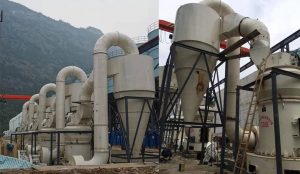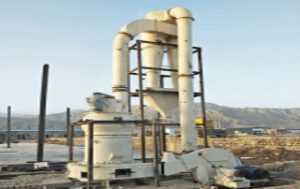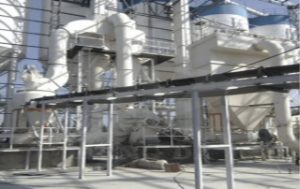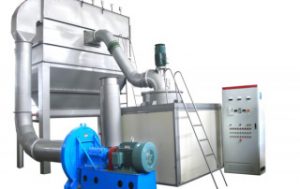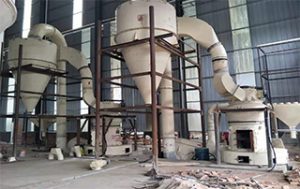Calcium carbonate, also known as grinding calcium, is a powder product with natural calcite, heavy calcium carbonate, limestone and chalk as raw materials and reaching a certain fineness through mechanical crushing and grinding. It is generally called fine grinding calcium carbonate (FGCC) in the world. Heavy calcium carbonate is divided into coarse ground calcium carbonate (> 3) according to its original average particle size (d) μ m) . finely ground calcium carbonate (1 ~ 3) μ m) . ultrafine calcium carbonate (0.5 ~ 1) μ m)。 The production process of heavy calcium carbonate is mainly divided into dry process and wet process.
1、 Dry process
Dry production of heavy calcium is a common way in China at present, and the technology is relatively mature. The products of various particle sizes can be obtained by using the processing device system composed of general grinding and grading equipment. The main equipment used are Raymond mill, ring roller mill, ball mill, high-pressure roller mill, vertical mixing mill, air flow mill, etc; The classification equipment mainly adopts impeller ultra-fine classifier. Dry process has the characteristics of less equipment investment, mature technology, simple process, low energy consumption and high single unit output
2、 Wet production process
The biggest difference between wet grinding and dry grinding lies in the difference of dispersion medium. Dry grinding takes air as the dispersion medium, while wet grinding takes water as the dispersion medium, combined with grinding additives, so that the dispersion of particles is better, the grinding efficiency is higher and the particle size is finer. In the general wet grinding process, the raw ore is crushed to about 400 mesh in two stages after washing. After dry grinding and classification, it is prepared into a slurry with a certain concentration, added with grinding additives and fed into the vertical grinder. The discharge fineness is controlled by adjusting various parameters of the grinder. The materials are discharged in the form of slurry after grinding, collected and bagged after drying and dust removal.


